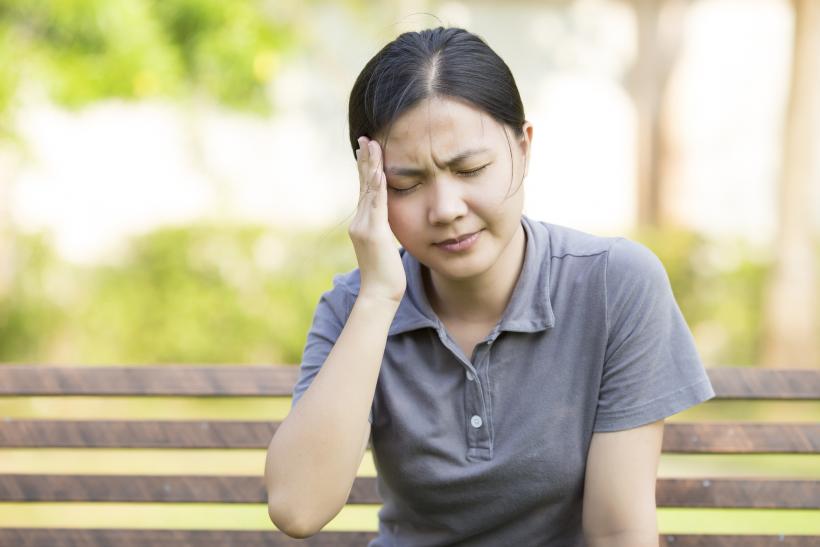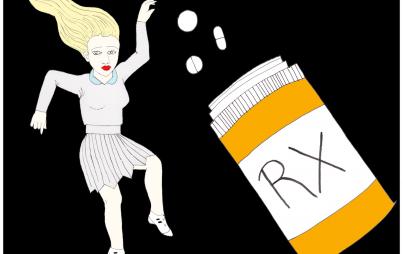
During each doctor visit, I was warned about the possibility of addiction that comes with prescription painkillers, but there was radio silence regarding the ways each alternative therapy would affect my life. Image: Thinkstock.
It’s difficult to stay hopeful about alternatives to opioid therapy when everywhere we turn, it seems those options are being taken away before they are even offered.
If you have chronic pain, you are all too aware of the stigma surrounding the condition.
Whether it comes from a disbelieving health professional, an intrusive pharmacy technician who does nothing to hide their suspicions, an employer who wonders why you can’t get off the couch today when you appeared “fine” the day before — it seems like everywhere you turn, someone is saying you don’t deserve pain relief.
I’m not talking about the kind of discomfort that comes with a broken limb or pulled tooth (though those are all very painful). I’m talking about the kind of pain that follows you everywhere, shrinking your brain and constricting regular physical or mental activity. The kind of pain that can only be dulled to a medium roar at the best of times.
For many of us, there are only two levels of pain: tolerable and intolerable.
Before I moved to Florida, I was on the same low-dose pain medication for several years. During each doctor visit, I was warned about the possibility of addiction that comes with prescription painkillers, but there was radio silence regarding the ways each alternative therapy would affect my life.
Whether it was the hormone therapy that put my body into medical menopause and only magnified the pain; the prednisone that made me see double due to lack of sleep and had me feeling like a stranger in my own body; or the anticonvulsant that made word retrieval difficult, slowed my motor skills, and created memory lapses — the side effects were often worse than the symptoms being treated.
Each Gastroenterologist (GI) I saw told me the next phase of treatment would be a biologic drug like Remicade, which can cause tuberculosis, certain cancers, and other permanent debilitating conditions. My original GI told me I would have to keep in touch with him and let him know if I planned to leave town, because the biologic medicine could cause my white blood cell count to drop to a dangerous level.
I didn't realize that Florida was recovering from a pain pill epidemic just as I was moved there. Pain clinics, or “pill mills,” were being shut down, and state laws regarding how doctors prescribe medications were changing.
Despite my long list of documented ailments, I couldn’t find a primary care physician who would prescribe me my mild pain medication (or any controlled medication, for that matter).
Instead, each provider I saw referred me to a “pain management specialist.”
Every pain specialist I called required at least $200 a visit (they never took insurance), and told me to bring a recent MRI (of what? They didn’t care, nor did they care how costly such a scan is without a referral), none of which I could afford.
Putting the focus on addiction instead of finding better alternatives for pain management makes the stigma even more difficult to fight as an intractable pain patient. Those of us with chronic/intractable pain, especially those of us who identify as women, already have to prove that our suffering isn’t all in our heads.
It didn’t matter that I had been taking the same low-dose pain medication for several years, or that I understood the very real difference between addiction and physical dependence. Almost every medical professional I met with treated me like I was drug-seeking, which is extremely demoralizing when all you want is a decent quality of life.
It also didn’t matter that I was experiencing stomach ulcers, endometrial implants and adhesions, ovarian cysts repeatedly bursting and leaving free fluid, inflammation of the small and large intestine, and incapacitating migraines.
I left without a prescription for anything to help with the pain.
During this time, I was lucky to find Kratom (mitragyna speciosa), a natural plant that helps with pain relief, through a local kava bar. With Kratom, I have been able to manage my pain safely, but the legality of it is constantly being challenged.
Opponents of the plant continue to question its “naturalness,” and compare it to street drugs that have psychotropic properties. I personally have been using it for over four years and haven’t experienced anything worse than light nausea — but if it becomes unavailable, I will have to return to prescription pain medication.
♦♦♦
A new national bill, S.2977 — Budgeting for Opioid Addiction Treatment Act, aims to fund addiction treatment by charging a one-cent tax per milligram of active opioid ingredient in a pain medication.
But coming from a state where the billion-dollar rehab industry is under scrutiny for patient-brokering, scams, and fraud, and is 49th per capita in mental health funding, I have to question who will benefit from this.
For those of us who can’t afford regular healthcare, and who can’t qualify for any benefits (despite being told by lawyers and the very agencies dispensing medication that we should have no problem getting approved), this kind of tax will only add to our financial stress.
Putting the focus on addiction instead of finding better alternatives for pain management makes the stigma even more difficult to fight as an intractable pain patient. Those of us with chronic/intractable pain, especially those of us who identify as women, already have to prove that our suffering isn’t all in our heads, so it can be extra demoralizing to have our disease or illness compared to another.
While the risk for addiction should certainly be considered, it shouldn’t be assumed within the first minute of a doctor visit.
When we talk about our pain, we aren’t seeking sympathy — we simply want to be seen and heard. Those of us with intractable pain have been told repeatedly to try yoga, meditation, physical therapy, and any other alternative you can imagine.
If we seem resistant to this advice, it is because we have tried these methods, and while they certainly provide many benefits, they aren’t solutions for all of us.
It’s difficult to stay hopeful about alternatives to opioid therapy when everywhere we turn it seems those options are being taken away before they are even offered.
Even when there are studies showing the many ways something natural like medical cannabis or Kratom can alleviate symptoms of painful conditions, legislation makes it more difficult (or impossible) to obtain.
Where are we to turn when our options run out?







